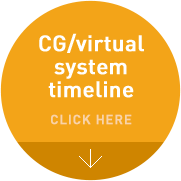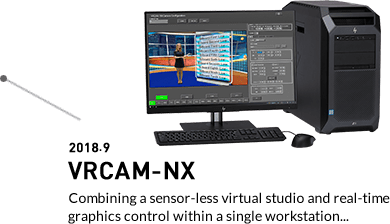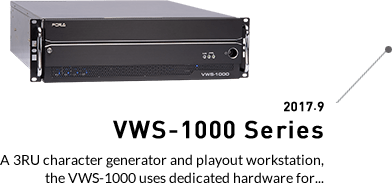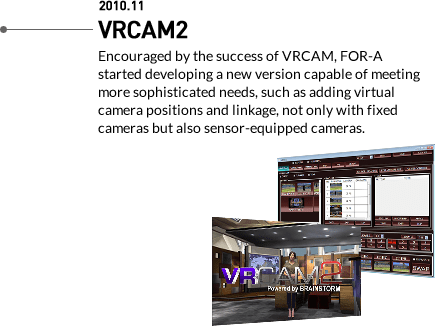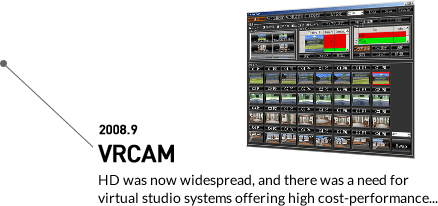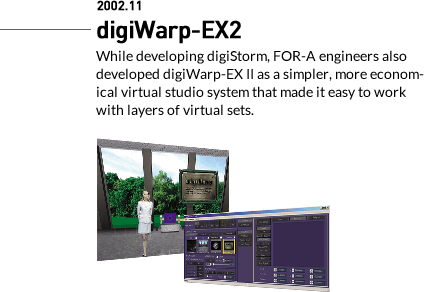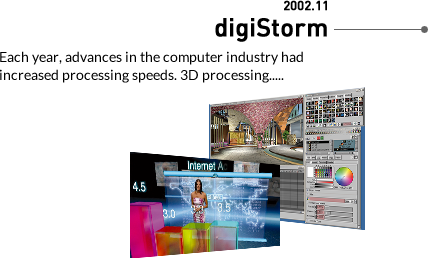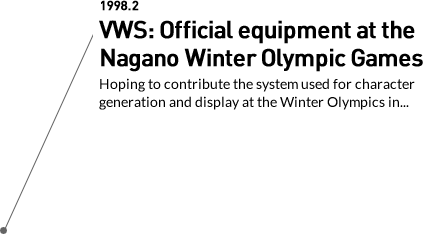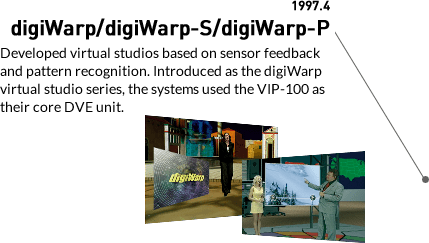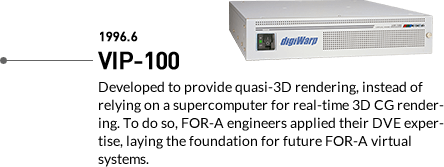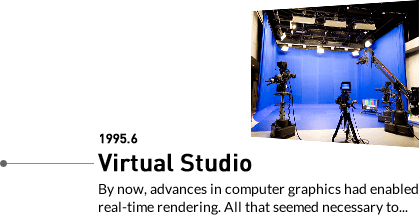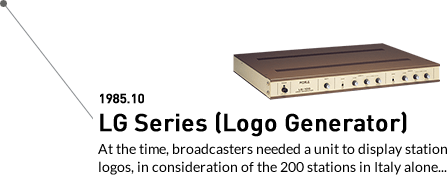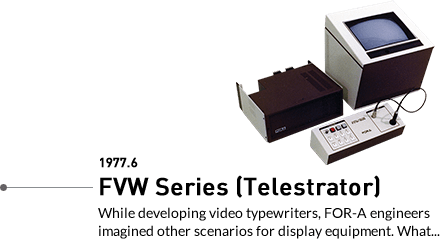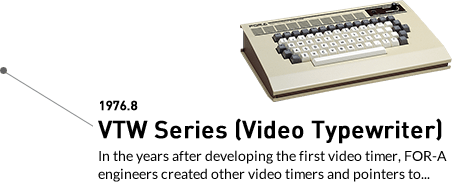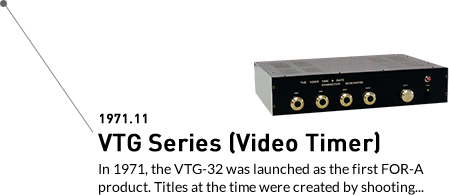Palm sized, for use at outside broadcasting stations or production studios
CG-Portable is a compact character generator that easily allows addition of graphics to original video material. Developed in cooperation with InSync Technology, it features a simple software and output box structure for portability and ease of use. The unit supports captions as well as text rolls and crawls in a variety of languages. A timer overlay provides up/down count for sports productions, while 70 frames of graphic playback buffers allows animated and static logo insertion over live video.
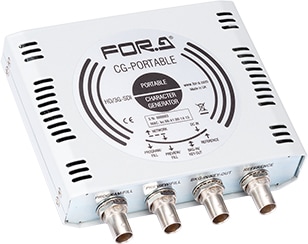
Simple operation and 4K compatibility
A standalone character generator, the EzV-300-12G has continued to evolve to suit a diverse range of operational styles and user requests. It can be operated as an HD caption system for applications from drawing to 3K output. Two different HD playouts can be produced in HD mode, and input previews from one channel can be made while outputting on-air captions for another channel. It is equipped with a full range of video and 3D caption playout functions and is compatible with various NLE systems.
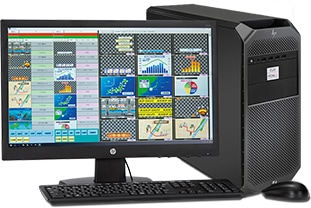
Combining a sensor-less virtual studio and real-time graphics control within a single workstation, the VRCAM-NX enables production without a camera operator. Itincorporates the functions of the VRCAM2 and the SmartDirectRCG, supporting up to four virtual camera with 16 positions per camera. The system also supports content production and playout control using CG templates.
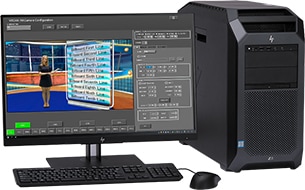
Supports video playout as well as caption playout
A 3RU character generator and playout workstation, the VWS-1000 uses dedicated hardware for high stability and robustness. In addition to caption playout, it is equipped with one channel for video playout and one channel for mixing (or one channel for the 4K model). It also allows superimposing and 3D captions on video. The 4K model is available for Quad Link 3G-SDI or 12G-SDI.
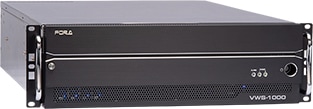
A new environment for cross-media broadcasting
A real-time 3D graphics system, Infinity Set is designed as a versatile solution for a range of equipment, from inexpensive, sensor-less setups to advanced studios linked by sensors. It accepts multiple video sources, and recreates 3D information from each source to synthesize realistic graphics.
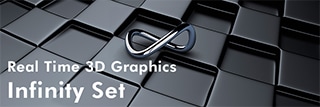
Flexible tools to meet real-time demands
Brainstorm eStudio software provides a real-time 3D graphics and virtual studio. engine for news, sports, weather, channel branding, and more. Its open architecture makes it compatible with a variety of applications, such as virtual sets, weather, channel branding, presentations, and film pre-visualization.
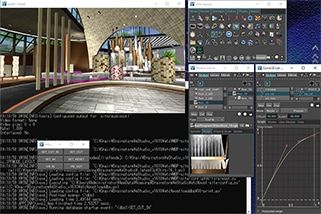
Another innovative approach: Chroma key shadows
Chroma keyers are essential equipment for virtual studio compositing. Subjects on camera are extracted from the background using differences in color, but unless sophisticated techniques are used, they may look unnatural against a different background. FOR-A took a different approach to resolving this issue by developing the ACK-3000, which applies 3D graphics to generate shadows of composited subjects in real time to match the background. Shadows also follow subject movement, applying an algorithm developed by FOR-A. The result: distracting details from compositing are greatly reduced, and images look much more natural.

Making virtual systems even easier
Developed as a production system that makes it easy for anyone to control a studio. Includes a variety of features essential in content production: create scenarios, playlists, and titles, switch cameras, and more. Adding optional features such as virtual studio capabilities or video switcher linkage enables an even broader production repertoire.
SmartDirect RCG has also been developed, which makes production with real-time computer graphics more accessible by simplifying CG production and eliminating the need for large-scale system deployment.

Taking a different angle: Virtual cameras
HD was now widespread, and there was a need for virtual studio systems offering high cost-performance. Although it was taken for granted that virtual studios must include sensor-equipped cameras, this made systems harder to deploy and set up. Taking a different angle, FOR-A introduced VRCAM. No sensors were needed, and without moving any cameras, real people or other subjects captured by a camera were moved by moving a virtual 3D set. Because camera movement is virtual, real camera operators are not needed. This enabled the groundbreaking possibility of one-person control of an entire virtual studio.
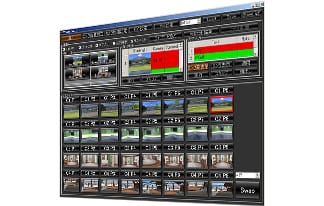
A new dimension in 3D virtual studios
Each year, advances in the computer industry had increased processing speeds. 3D processing performance had also taken off. Real-time 3D rending at HD resolution was now possible without relying on expensive supercomputers. Working with a new partner—Brainstorm Multimedia—FOR-A began developing a 3D virtual system that would run on workstation-class computers. This collaboration culminated in the digiStorm 3D virtual system.

VWS: Official equipment at the Nagano Winter Olympic Games
Hoping to contribute the system used for character generation and display at the Winter Olympics in Nagano, FOR-A engineers began developing a system for athletes' scores, times, and other data. FOR-A was selected over other manufacturers worldwide in recognition of the company's compact systems offering fast rendering and solid performance. For about 2 years, many employees often went to Nagano to follow through on this Olympic commitment. The FOR-A brand shot to prominence in the broadcast industry during the event, as many Japanese broadcasters used the system, and as event coverage reached viewers around the world. FOR-A character generators spread among broadcasters throughout Japan as a result.
The genesis of virtual studios
By now, advances in computer graphics had enabled real-time rendering. All that seemed necessary to create the illusion of shooting in a realistic (yet virtual) studio was to move the virtual environment to match feedback from camera panning, tilting, and zooming. The system inspired by this vision was called a virtual studio. Virtual studio development started through collaboration between FOR-A and Orad, an Israeli company later acquired by Avid. With titling solutions already available, this system would give studios a new way to take program production into a new dimension. Still, at the time, even with ample 3D resolution, real-time 3D CG animation required the processing power of a supercomputer. Significant hurdles remained, both in cost and operation.
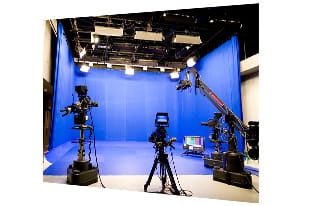
A new use for computers: Character generation
Although titling was now more common in TV programs, most titling workflows still required composition of phototypeset or hand-lettered title footage with the main footage. But also at this time, improvements in computer graphics rendering performance led to a new technique: using text rendered on a computer as titles. FOR-A had already developed video timers, video typewriters, telestrators, and logo generators (in the VTG, VTW, FVW, and LG series), as well as equipment for on-screen compositing of text and graphics. As the next step, engineers developed electronic titling, in the VWS-100. Still, there was much to learn—about how broadcasters would use the system, for example—and it was not until the VWS-300 that FOR-A made significant progress.
(VWS systems are sold for the domestic Japanese market.)
From the company that coined logo generator
At the time, broadcasters needed a unit to display station logos, in consideration of the 200 stations in Italy alone. In response, FOR-A created the LG-100. The description logo generator itself was coined by FOR-A, and it became the standard term in use today.

Video writers (telestrators) for display of handwritten notes
While developing video typewriters, FOR-A engineers imagined other scenarios for display equipment. What if a user's handwritten text or symbols could be displayed on a separate screen, or even at a remote location? With this vision in mind, they began developing a telestrator. In 1977, FOR-A created the world's first freehand drawing equipment of its kind. The FVW-900 combined a microprocessor with equipment to detect the tip of a light pen. The former technology was still in its infancy, and the latter units tended to be large and expensive. To those who watched TV game shows and other programs where handwriting was displayed, this system may seem familiar.
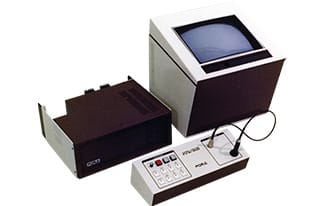
A precursor to character generators: The video typewriter
In the years after developing the first video timer, FOR-A engineers created other video timers and pointers to display numbers and arrows. But because no devices could display text, work began on a video typewriter for descriptive text. The result was the VTW-64, which enabled real-time display of the text entered on its keyboard. This was followed by the VTW-200, which met needs in the quantity, quality, size, and languages of text displayed. To reduce the size of units in this series, a microcomputer (increasingly popular then) was introduced, along with a write-only chip to expand the character memory. Their compact size and simplicity made them quite successful, with hospitals and airports being just two of the many applications. Here, the engineers had laid the foundation for FOR-A character generators.
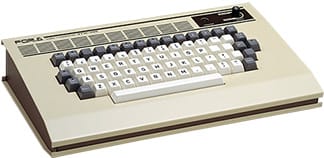
Where FOR-A development all began: A video timer
In 1971, the VTG-32 was launched as the first FOR-A product. Titles at the time were created by shooting text and then using a switcher to superimpose the footage over other video. Imagining that it would be possible to display numbers with some kind of character generator, FOR-A developed and marketed just such a device. This work pioneered time display, often shown on TV even today. Development continued, and an issue that always reset restarted timers to "00" was resolved. By 1983, model VTG-12 offered accurate time display and even calculated leap year automatically, thanks to a just-released real-time clock chip and accompanying microprocessor. This release further popularized FOR-A video timers in the industry. A series of other models was released through ongoing development, with the VTG-15 in 2003 being a favorite of many to this day.

